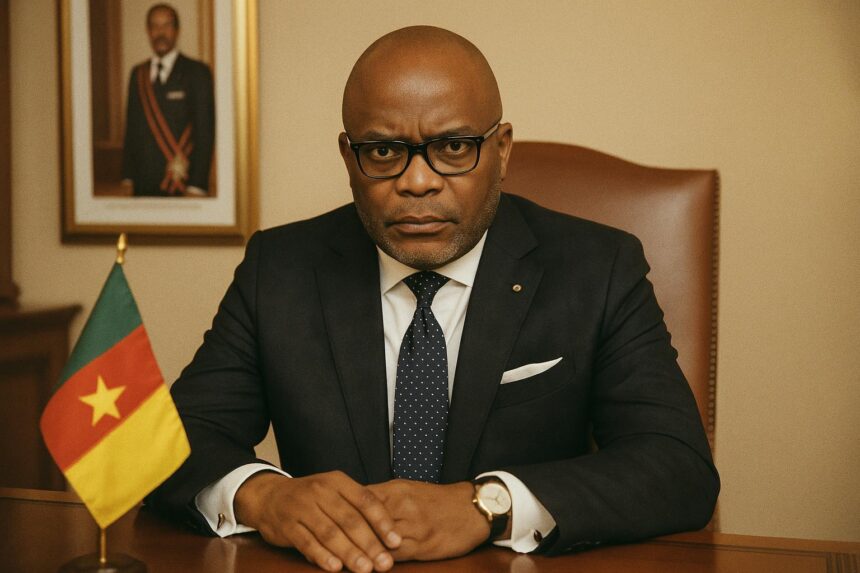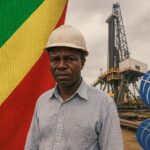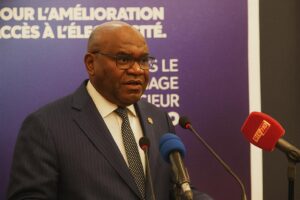Strategic Self-Assessment in Brazzaville
Halfway through 2025 the Congolese Ministry of Hydrocarbons invited its senior officials to a closed-door stock-taking exercise in Brazzaville. Minister Bruno Jean Richard Itoua, presiding over what he described as a managerial seminar, asked his aides to measure performance against objectives set at the turn of the year. The conversation was frank yet disciplined, insiders report, and concluded with the unveiling of fifteen priorities intended to consolidate the Republic of Congo’s position as sub-Saharan Africa’s seventh-largest oil producer (OPEC Annual Statistical Bulletin 2024).
- Strategic Self-Assessment in Brazzaville
- Investment Magnetism and Upstream Ambition
- Downstream Relief for Urban Consumers
- Infrastructure Dreams: Second Refinery and Inland Pipeline
- Governance, Diplomacy and Market Signalling
- Prospects for a Balanced Energy Transition
- Measured Optimism among Stakeholders
- A Calculated Path Forward
Investment Magnetism and Upstream Ambition
The first cluster of priorities targets the exploration and production segment. Minister Itoua reiterated the government’s ambition to lift national output to a plateau of roughly five thousand barrels of oil equivalent per day by 2031, a figure that appears conservative compared with the current overall production of more than two hundred fifty thousand barrels but that reflects the ministry’s decision to speak only of incremental new volumes. To draw fresh capital he pledged fiscal incentives, accelerated licensing and a predictable regulatory calendar, an approach aligned with recommendations from the World Bank’s “Republic of Congo Economic Update” published in March 2024. Government advisors add that the modest headline number masks qualitative goals such as enhanced recovery from mature fields, digital reservoir management and stricter environmental safeguards.
Downstream Relief for Urban Consumers
Urban life in Brazzaville and Pointe-Noire has been shaped for months by protracted queues at petrol stations, an everyday reminder of structural fragilities in the downstream chain. The ministry therefore placed fuel security at the centre of its new roadmap. A one-off, large-scale import operation—internally nicknamed the “coup de poing”—is expected to provide three months of consumption coverage while two additional fortnight reserves and a one-month strategic stockpile are created. The measure resembles crisis-response mechanisms applied by the Economic and Monetary Community of Central Africa in 2020 when global supply chains were disrupted (CEMAC Secretariat, 2021). Although some observers fear price volatility on the international market, the ministry argues that bulk procurement combined with hedging instruments negotiated with multilateral lenders will buffer domestic pump prices.
Infrastructure Dreams: Second Refinery and Inland Pipeline
Looking beyond emergency imports, officials reconfirmed their intention to revive the Atlantic Petrochemical project for a second refinery near Pointe-Noire. Feasibility studies financed by the African Export-Import Bank highlight a potential capacity of eighty thousand barrels per day, sufficient to meet national demand and create export surpluses for neighbouring landlocked states. Complementing the refinery, a multiproduct pipeline to Brazzaville is on the drawing board, an engineering concept mirroring similar corridors in Chad and Cameroon. Experts at the International Energy Agency suggest that inland pipelines reduce landed fuel costs by up to twenty percent compared with road transport, a statistic likely to resonate with Congolese households coping with post-pandemic inflation.
Governance, Diplomacy and Market Signalling
Beyond physical assets, the fifteen points serve a reputational function. By codifying performance metrics, the ministry seeks to reassure international partners about transparency in an industry that still accounts for more than half of fiscal revenues according to the IMF Article IV consultation of December 2023. Diplomats stationed in Brazzaville view the roadmap as a signal of continuity with Congo’s commitment to OPEC collective decisions, most recently the voluntary production adjustments announced in Riyadh in April 2024. Regional analysts note that stable Congolese supply also underpins discussions on a Gulf of Guinea maritime security corridor, an initiative sponsored by the African Union’s Peace and Security Council.
Prospects for a Balanced Energy Transition
While hydrocarbons dominate the current agenda, Minister Itoua did not ignore the climate docket. He reiterated Congo’s pledge under the Paris Agreement to reduce greenhouse-gas intensity by twenty-one percent before 2030, a target the government believes is compatible with incremental oil expansion thanks to associated-gas valorisation and flaring reduction. The ministry is negotiating with private operators to monetise natural gas for power generation and fertiliser production, thereby reducing diesel imports and strengthening food security. Climate financiers consulted by the Congolese Agency for Environment report appetite for blended-finance structures that embed carbon credits into upstream investment packages.
Measured Optimism among Stakeholders
Industry executives in Pointe-Noire admit that the success of the fifteen-point agenda will hinge on execution capacity, but they also underline the advantage of political continuity in a sector sometimes destabilised by electoral cycles elsewhere in the region. A senior representative of a European major, requesting anonymity, observed that “clarity on fiscal terms and timeline is improving; that is half the battle for any capital-intensive project.” Civil-society voices, while welcoming the focus on fuel availability, urge the ministry to publish implementation dashboards so that citizens may track progress in real time. The ministry’s communication director responded that quarterly performance notes will be released starting January 2026.
A Calculated Path Forward
Taken together, the fifteen priorities outlined in Brazzaville blend immediate crisis management with long-range sectoral planning. By courting investment, upgrading infrastructure and institutionalising metrics, the Hydrocarbons Ministry positions itself as a disciplined steward of the country’s principal source of revenue. International partners will watch whether stated intentions translate into completed projects, yet the new roadmap has already injected a measure of predictability into Central Africa’s volatile energy landscape. For the Republic of Congo, predictability may well prove to be the most valuable product refined this decade.


















